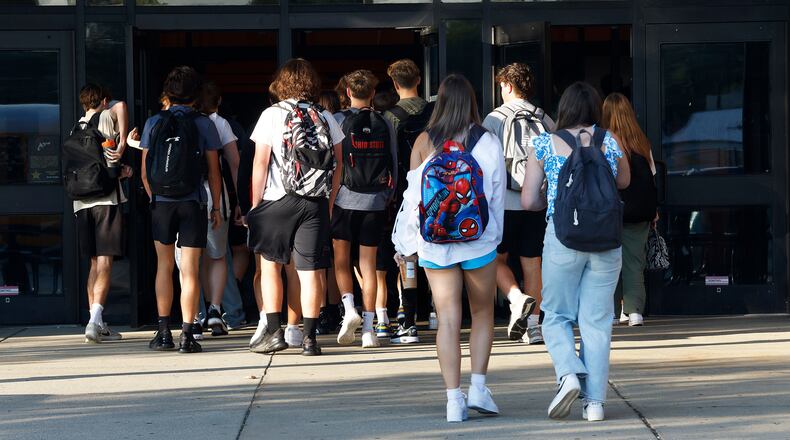This news organization investigated the impact of the pandemic and changing technology on the mental health of children in the region during a six-month project. We found kids in the Dayton region are in a mental health crisis and much of the money that has supported kids is going away in 2025.
Here are the five biggest stories from 2024.
1. Higher education enrollment and finances: Three local universities — Wittenberg University, Central State University and the University of Dayton — announced cuts to programs and did not renew contracts for some faculty. Universities across the country have struggled with enrollment and finances following the COVID-19 pandemic, as a more competitive job market and smaller graduating class sizes have led to more competition for fewer college students.
Not all of the local universities are struggling to attract students. Sinclair Community College increased enrollment by 13% at the beginning of the 2024-25 school year. Wright State University saw a 7% increase in enrollment compared to the fall 2023 semester, following financial and enrollment problems that went back almost a decade.
2. Kids in crisis: A six-month investigation into children’s mental health in the Dayton region found that more kids have struggled with mental illness from as far back as 2016. While there is more focus on the issue now because even more kids were impacted post-pandemic, many of the funding mechanisms used to support kids are becoming smaller or going away already. The investigation looked at parenting, suicide, schools and health care professionals.
3. School vouchers: In 2023, the state legislature expanded school vouchers so everyone in the state could access at least 10% of the maximum voucher, based on household income. In 2024, more data was available to see how many people took advantage of the expanded voucher system. The state spent almost $1 billion just on the voucher system.
Ohio has five voucher programs: the Autism scholarship, the Cleveland scholarship, Jon Peterson Special Needs scholarship, EdChoice and EdChoice Expansion. Almost 70% of the voucher spending in 2024 came from EdChoice and EdChoice Expansion.
The EdChoice scholarship amount is $6,166 for grades K-8 and $8,408 for grades 9-12 in the 2024-2025 school year, according to the Ohio Department of Education and Workforce, which oversees the vouchers.
In October, a Dayton Daily News analysis found about 3,000 more students will be participating in Ohio’s voucher program to attend private schools this school year compared to the previous year.
4. Cell phone bans: Beginning this school year, many schools, including Beavercreek, Centerville and Kettering, tightened their policies around cell phones in the classroom.
Ohio Gov. Mike DeWine called on the Ohio General Assembly during his 2024 State of the State address to help schools get cell phones out of classrooms. A new state law, which goes into effect in 2025, requires all schools to have a policy around cell phones in the classroom.
5. Dayton Metro Library fights: After a massive fight broke out at the Southeast Library branch in Belmont, a debate over what Dayton Public students have to do after school has reignited. The Dayton Daily News found calls to the downtown library branch increased nearly 80% compared to 2023 and 172% compared to 2022.
Dayton Metro Library has held meetings to discuss what to do with the community, but the issue is ongoing.
About the Author

